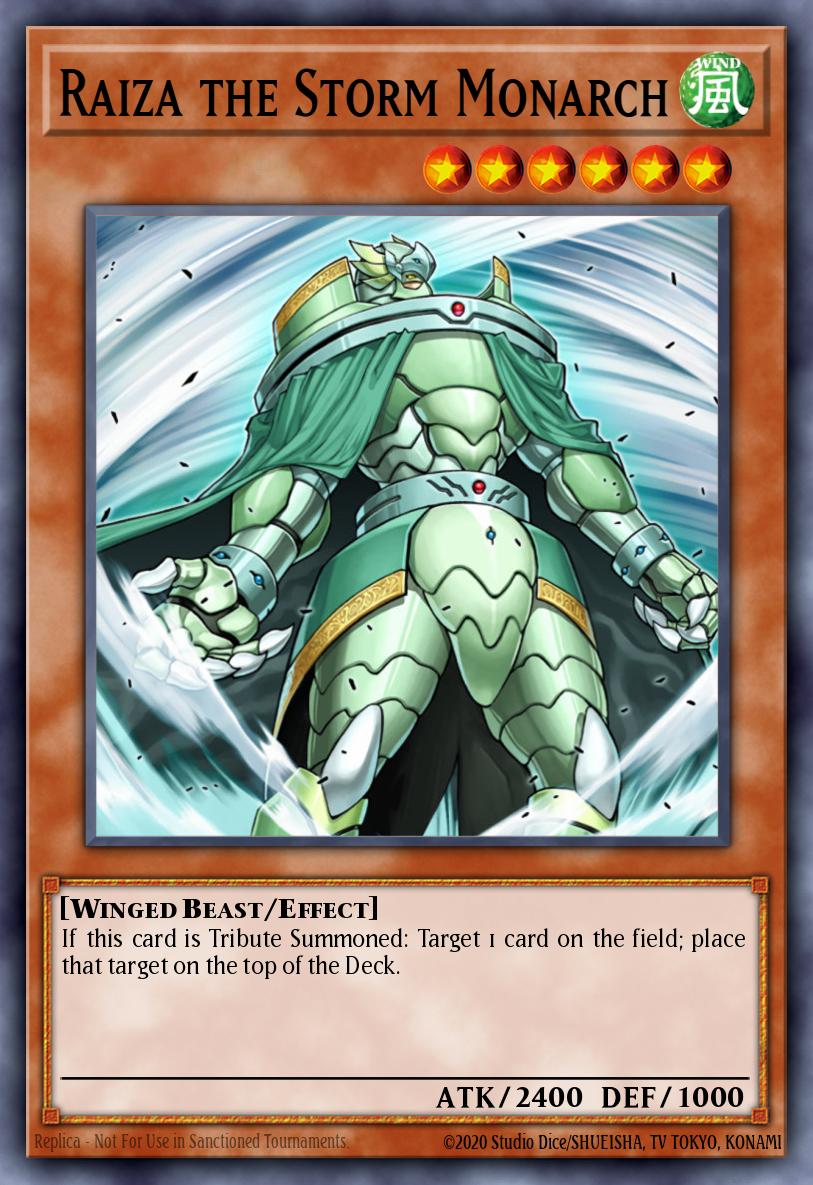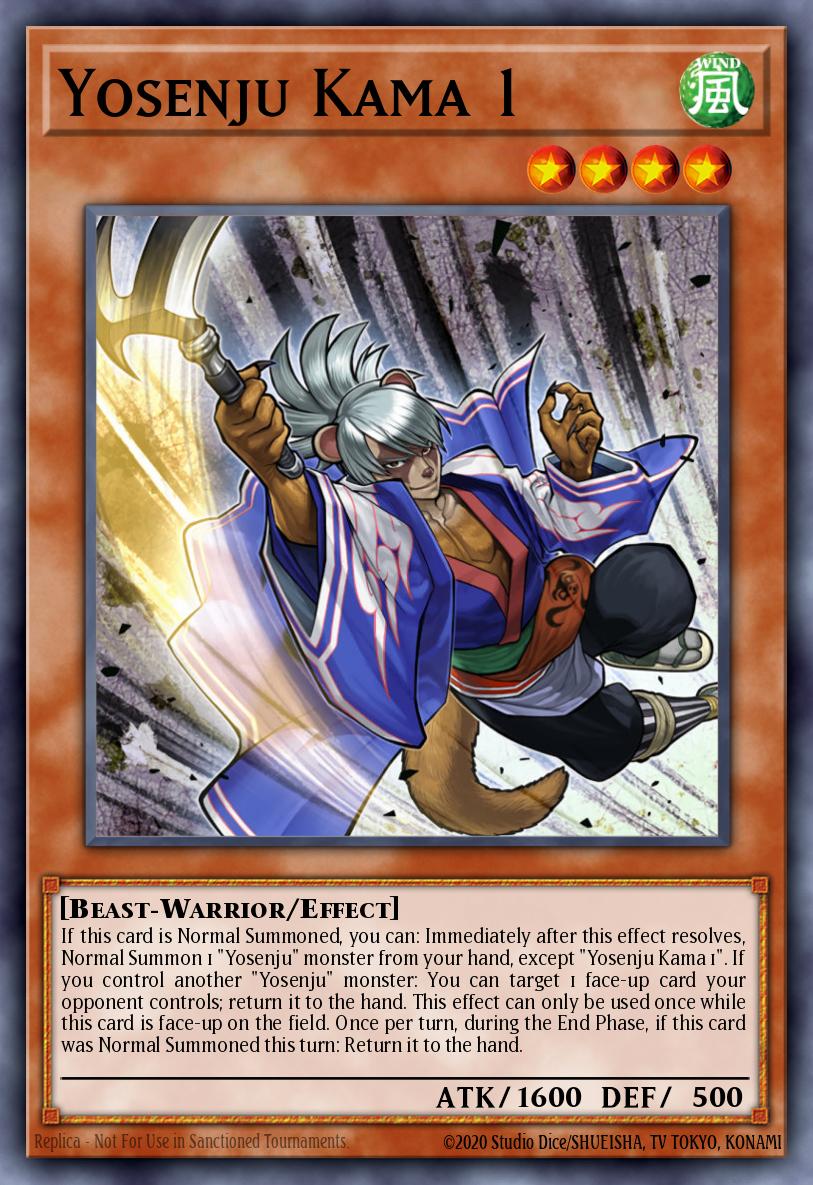There is an introductory article to the series found here.
What does it mean to be WIND?
Wind monsters are thematically quick and fleeting, often leaving the board just as quickly as they swept in. They force the opposition aside rather than destroying it. Harrying their opponents and then retreating safely up into the air. They blow in like a storm but will soon dissipate if you can weather the storm. However, if you try to face them head on you will soon find just how evasive they are, weaving in and out of the hand.
Non-Destruction
The Wind attribute contains a lot of removal. Like a whole lot. But the main difference between the removal wind monsters have is that very little of it destroys cards. There are some exceptions such as Windrose the Elemental Lord but in general wind removes cards by either bouncing them or returning them to deck. We see this in cards like Swift Birdman Joe, Raiza the Storm Monarch, and Castel the Skyblaster Musketeer. Within these 3 examples, we see the 3 different levels of permanency offered by wind removal. There's bounce to hand, spin to top of deck, and shuffle into deck.
 I wonder what you drew *smug smile*
I wonder what you drew *smug smile*Bouncing your opponent's cards is a very temporary solution in a lot of cases. But in others it is just as good if not better than destroying it. Returning monsters with a heavy summoning cost or an extra deck monster is often the same as killing it. In addition, it also bypasses a lot of floating effects. When removing Dante, Traveler of the Burning Abyss, you would much rather return it to the extra deck than allow its graveyard effect to go off and possibly set up the infamous Cir-Dante loop. When it comes to removing spells and traps via bouncing, you can help ensure you have a safe turn, but they will be able to set all the possibly dangerous traps again next turn.
Spinning cards is the exact same as bouncing when it comes to extra deck monsters. However, when we look towards the main deck there is more nuance. Returning something to the top of the deck can both be a lot worse than shuffling it in and a lot more powerful. Raiza the Storm Monarch was used in a powerful meta deck dubbed Perfect Circle where the fact that it returned to the top of the deck was a huge boon a lot of the time. If your opponent set a dead card as a bluff or a card with a situational activation requirement like Mirror Force you could just put it on top of their deck, ensuring that their next draw would be just as dead while you have developed more power on the board.
But in some cases, shuffling into the deck is better since it makes the card a lot harder to access. If it is a threatening enough card that you want to use removal on it, you probably do not always want to see it come down again the next turn. For example, returning a Dark Armed Dragon to the top of their deck while their grave is still setup is not ideal.
Self Bouncing
The second theme I will be talking about is returning each other and themselves to the hand. This is prominent in several archetypes such as Harpies and Mist Valleys. The main issue with this theme is that it is very hard to tune right, since it can either be a huge tempo loss or lead to degenerate loops. Divine Wind of Mist Valley is limited on the TCG banlist because it enables a lot of loops and FTKs.
Mist Valley has never been a competent archetype, but some of its cards have been usable by other strategies. The most successful one is probably pendulum decks using Mist Valley Apex Avian as a recurring negate. Those decks can pendulum summon it every turn after it returns to the hand, allowing the reuse of its effect. There has also been some experimentation with Mist Valley Falcon to return your own spells and traps to gain extra value out of them, similar to how a Satellarknight deck would. Harpie Dancer is one of the strongest cards in the Harpie archetype and allows you to re-use on normal summon effects and save cards in hand where they are safer against removal.
Flooding
 Very good at weaseling themselves out of danger
Very good at weaseling themselves out of dangerWind monsters fly in flocks, and as such you can expect them to all come out at once. A lot of wind monsters enable summoning out each other, especially out of the hand. There are Yosenjus that allow you to chain their normal summons to one another before returning to hand in the end phase. We have Harpies that all fly out of the hand or are returned from the grave with Hysteric Party. There's also Windwitches that turn one monster into three very quickly and so on.
The sad part about a lot of these is that while they are very good at swarming they do it at a steep minus in card advantage. Spending 3-4 cards to get 3 monsters onto the board just isn't very powerful. Some of the more modern archetypes try to circumvent this without making the cards horribly broken. Having them swarm from deck, could be very dangerous.
Yosenjus let you get all the monsters back to hand at the end of turn. This is great for retaining advantage but terrible for board presence. This leaves them reliant on cards like Drowning Mirror Force to live to the next turn, which isn't all that great. Windwitches let you put out an indestructible Crystal Wing Synchro Dragon from a single card, but restrict you to only special summoning Wind monsters that turn. This did little to make people only run them in Wind decks, however. Instead, people just played it in decks with a low reliance on special summoning.
Closing thoughts
I really like the Wind attribute, but historically it has never really had many successful decks. There have been a couple of stand outs like Ritual Beasts, but they're few and far between. On the highest level of play we have mostly seen others abuse a select few Wind cards in non-Wind decks. Basically, most of the Wind support is designed to keep the potentially broken Wind cards in check. This left other attributes with something they can easily abuse.
Regardless I think wind has a really solid identity with a lot of design space left to explore. I am excited to see what the future holds for them.




